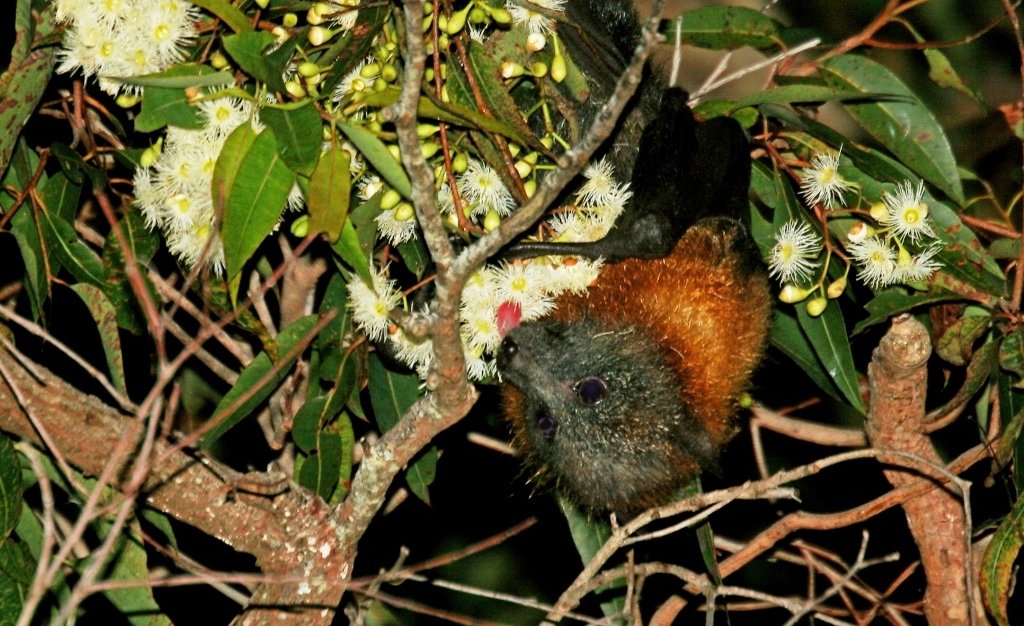Tanya Loos
Before I moved to the Wombat Forest I lived in Melbourne, and while there I was a flying-fox advocate! I volunteered to give talks on Grey-headed Flying-foxes to Landcare and other environmental groups to explain why flying-foxes were in Melbourne in such numbers, and why any solutions to moving the Royal Botanic Gardens Melbourne camp had to be cruelty free – as they are such a special species.
I was so sad to leave the flying-foxes when we moved – and have always made a point of visiting the camp at Rosalind Park Bendigo.
And now they are in our region! There are camps at the Castlemaine and Malmsbury Botanic gardens and reports of them feeding in flowering trees in places such as Creswick and Gisborne.
So what ARE flying-foxes? They are large bats, colloquially known as megabats. But unlike the insect eating microbats they are totally vegetarian.
In fact, flying-foxes are the ultimate forest gardeners of Australia’s rainforests and woodlands. Each night, flying-foxes leave their day camps to fan out across the landscape, searching for the night’s meal of pollen, nectar and fruit. As they feed, the bats play a vital role in the pollination and seed dispersal of hundreds of species of native trees and shrubs – predominantly from the families Myrtaceae (Eucalyptus, Callistemon, Angophora and Syncarpia) and Proteaceae (Banksia). Flying-fox fur is thick and fluffy and thus very suited to capturing pollen.
Flying-foxes are long-distance fliers; nomads who use a fluid network of day roosts as they travel up and down the east coast. Their roosts or campsites are like caravan parks with an ever-changing suite of visitors from week to week. The flying-fox visiting your garden could have very well been in Adelaide or Cairns the week prior!
These wonderful ‘sky puppies” (as they are called by bat fans) are having a really tough time up north due to terrible food shortages. There are more flying-foxes in more locations all over Victoria than ever before for this reason.
Constant heavy rains washes the pollen and nectar away and when the hungry bats go for fruit in orchards they may get tangled up in unsafe fruit netting.
Unsafe fruit netting is banned in Victoria – but not well enforced so bats are still getting entangled in unacceptable numbers. So to help your new visitors, wildlife friendly fruit netting is an absolute must! Wildlife friendly fruit netting has a very fine aperture – much like hail nets. Fruit netting that has holes wide enough to poke your finger through means that a claw or wing can become entangled.
If a flying fox is injured or entangled on your property it is important to call Wildlife Victoria or another local rescue organisation for advice and help as they have very big teeth and claws, and there is a risk of transmitting disease if you are bitten or scratched.
For more information on our flying-foxes check out this lovely website: https://littleaussiebat.com.au/
For information on wildlife friendly netting and fencing – see https://wildlifefriendlyfencing.org/
Tanya Loos is a local naturalist, author and environmental consultant who loves to work in the environmental not-for-profit sector. She is the author of “Daylesford Nature Diary” available from her website or from Paradise Books in Vincent Street, Daylesford.
Have you got any nature questions for Tanya? Send them in!














